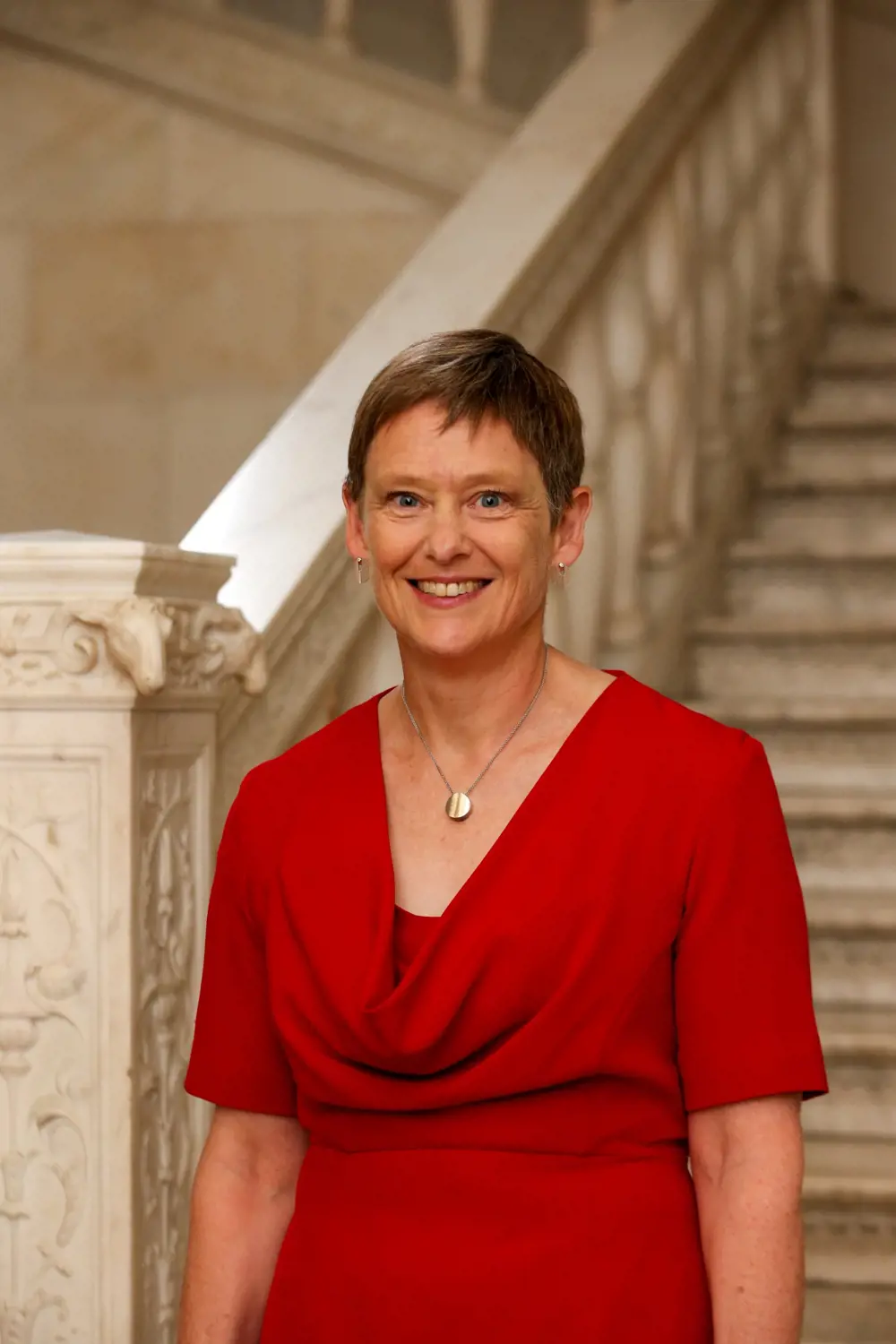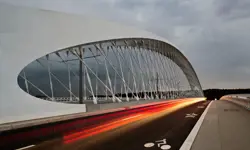
How can we reimagine building performance?

© Fiona Cousins, CIBSE
Engineers are trained to solve problems. Many of us are members of professional bodies, whose charters require that we act for the good of society. As I started my presidential year at CIBSE, I have been thinking about the problems that we are working to solve and how we connect our everyday work to our broader impact and influence.
Good problem-solving and design needs a clear understanding of the problem, followed by a creative, iterative process, grounded in expertise, that tests different solutions against the requirements. In times of change – and the pace of change is more rapid than it has ever been and will never be as slow again – the definition of the problem keeps changing. In engineering work, the boundaries of the problem are hard to find because everything we do has social, environmental and economic impact. The problems we are trying to solve tend to be both messy and wicked: there is no one right answer, just better and worse, and even these judgements depend on perspective and time.
Looking at this through a building services’ lens, we concern ourselves, every day, with building performance. But what is building performance? What do buildings do for us? What should buildings do for us? These are surprisingly hard questions to answer. We are all so embedded in the built environment that, like a fish in water, we struggle to describe the impact of our surroundings.
What we value from our buildings, and how much we value it, depends on our personal circumstances – when things are tough, we seek protection from the weather, and then start to enjoy the benefits of running water, sanitation and power. As we relax into the easy availability of those services we seek security, comfort, and control. We then have time to think about the broader impacts of buildings on climate, our physical health, our human interactions, and the natural environment.
What we value from our buildings also depends on the world around us, especially once our basic needs are met. Buildings and the built environment are expensive, long-lasting, carbon intensive in both construction and operation, and form the backdrops to our lives. For some of these issues the way in which we measure value is unclear, because of both a lack of measurables and inherent subjectivity, and we like to have measures, to be able to manage.
We must be brave. When we look back, even just a few years, we can see that what we consider to be good has changed, as we look forward, we need to drive change in a direction that creates long-term benefit for our society.
Fiona Cousins
As engineers, we must challenge ourselves both to understand the breadth of the problem and to draw boundaries for the problem that allow us to be pragmatic and make progress.
For problems of this kind, there is a general prescription, outlined in three steps or attitudes.
Firstly, we must be curious about the problem and its solutions. This will help us make the connection between our small decisions and their bigger impact. For example, we have historically focused our ideas about building performance on cost and comfort, and more recently, on carbon and individual wellbeing, driven at first by aspiration to sustainability and more recently by legislation. In future, our thinking will likely need to encompass biodiversity impact. The connection between our decisions and their impact can feel indirect.
Secondly, we must share what we know and listen generously to others. Engineering infrastructure is often meant to be invisible, and the result is that most people do not give it a second thought. At the same time, no single person can understand all the impacts of a project or intervention. Pulling in other perspectives is not easy, but it’s essential to view wicked problems through multiples lenses, especially in a world of constant change.
And thirdly, we must be brave. When we look back, even just a few years, we can see that what we consider to be good has changed, as we look forward, we need to drive change in a direction that creates long-term benefit for our society. Driving change is hard – doing things in new ways will often meet resistance and carries risk – and we will sometimes have to defend pragmatism over perfection, but we must lean into change to meet our social obligation.
Applying this prescription to our area of activity led CIBSE to start to reimagine building performance. We used futures techniques to broaden our thinking about the world and to challenge our problem definitions, we reached far outside the industry to get different perspectives on buildings and dug deep within it to make sure we had understood what is technically possible. We also had to spend some time explaining why we wanted to take a broader look and what the impact could be.
The work led us, or perhaps led us back, to an understanding that health and resilience are the ultimate drivers of building performance. This, in turn, allowed us to reframe issues of building performance in its larger context using four themes:
- Variety: recognising the dynamic demands on built spaces – indoors and outdoors – to serve different uses, and different groups.
- Connectedness: buildings do not exist in isolation. How do we work with utilities and infrastructure so that, for example, buildings can be active participants in decarbonising our energy grid?
- Readiness: how do buildings reduce risk and build capacity to support communities when they encounter extreme events?
- Emergence: being open to reshaping our approach in the light of new developments, especially related to materials and energy. Imagine a future ‘nutrition labelling of building produces’.
These themes are expansive and challenging, helping us make the connection between the detailed problem-solving we do every day, and the issues that we must deal with as a society.
I invite you to follow up on this discussion – see more in my Presidential Address for CIBSE – and feed back thoughts via [email protected] or by tagging @RAEngNews and #IngeniaMag on X.
Contributors
Fiona Cousins has worked at Arup since 1989 and is currently Arup Americas Region Chair, a member of the Arup Group Board and an Arup Fellow. Her built projects include the US Embassy in London, Fulton Street Station in New York and the Frick Chemistry Building at Princeton University. Fiona is the 2024–25 President of CIBSE.
Keep up-to-date with Ingenia for free
SubscribeRelated content
Civil & structural

Building the Shard
The Shard is one of London's most iconic buildings. The tallest in Western Europe, it was designed by Italian architect Renzo Piano and dominates the city’s skyline. Ingenia spoke to John Parker, project director for structural engineers WSP, who outlined the engineering decisions made in building the enormous steel and glass structure.

The return of arched bridges
Arch bridges are strong, durable and require little maintenance. However, very few had been built since the early 1900s until the FlexiArch was developed and launched in 2007. Now, there has been a minor renaissance for this ancient form of construction.

Creating user-friendly buildings
For Michelle McDowell, a former Business Woman of the Year, a passion for joined-up design thinking and building information modelling with a user-friendly approach has enabled her to pioneer revolutionary changes in her field.

Troja Bridge
In November 2014, one of the world’s largest network arch bridges was officially opened in Prague. The UK may soon have its first network arch bridge if the go-ahead is given for a new rail project in Manchester.
Other content from Ingenia
Quick read

- Environment & sustainability
- Opinion
A young engineer’s perspective on the good, the bad and the ugly of COP27

- Environment & sustainability
- Issue 95
How do we pay for net zero technologies?
Quick read

- Transport
- Mechanical
- How I got here
Electrifying trains and STEMAZING outreach

- Civil & structural
- Environment & sustainability
- Issue 95